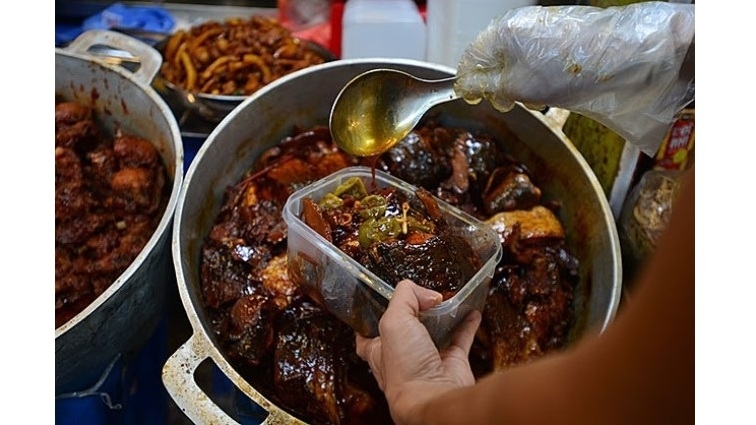What are the differences in the Vietnamese language among regions?
A typical part of the Vietnamese language is the accents in different regions, also known as dialects. Despite the fact pronunciation differs, writing remains the same. This creates great diversity in the Vietnamese language.
 |
| Associate Professor of Linguistics, Dr Trinh Cam Lam. Photo ussh.vnu.edu.vn |
Vietnamese is basically divided into three mutually intelligible dialects: North, Central and South.
The dialect in the North (or Hanoi dialect) is considered the national script due to its long history of development. It is spoken in Hanoi and provinces from northern Vietnam to Thanh Hoa Province. The Central dialect refers to that spoken between Nghe An Province and Da Nang. The dialect in the South is spoken from Da Nang down through the rest of the country.
There are differences among small regions in terms of dialect by reason of geographical locations and cultural features. The differences in dialects are mostly reflected in sounds and vocabulary.
The dialects differ in the use of tone. The Hanoi dialect uses full six tones (including level, acute accent, grave accent, hook, tilde and dot below), while the Central and the South have only five tones, and regions in the Central region have only four tones. The Central and Southern speakers don’t discern clearly between the hook and tilde. They almost use the hook instead of the tilde.
There are also a huge number of local words used in different regions that add a richness to the Vietnamese language.
What is the beauty of the Hanoi dialect in general and the Hanoi women's dialect in particular?
The Hanoi dialect, especially the traditional Hanoi women's dialect, is very formal, soft, sweet and accurately pronounced. They speak like they are singing.
It is considered to be the standard of the Vietnamese.
 |
| Traditional Hanoi ladies are known for their elegant behaviour. Two Girls and a Child, by To Ngoc Van. Photo english.cinet.vn |
What do you think about people from the old Hanoi?
I think it’s a combination of good genetics and upbringing.
About genetics, Hanoi is the capital of Vietnam and has been the capital of the country for more than 1,000 years. This is where people nationwide gathered. The ancestors of Hanoians inherited diverse genes which can produce good combinations.
And about upbringing, I think this is what sets Hanoians apart. Upbringing gives a person charisma which makes them appear more attractive than they actually are. Traditional Hanoi women are known for their elegant behaviour. They are polite, discreet and dexterous. Maybe some are not so beautiful, but they are always graceful and delicate. They speak with soft tones and gentle words, and never use vulgar language.
From a young age, they are taught etiquette like formal expressions, how to behave towards others, and how to greet elders. Hanoian society is very hierarchical.
Men are also taught from a young age to be ambitious and responsible. They are a little bit reserved but manly and money minded.
What do you think the difference is between the present Hanoi dialect and the old one which is considered the pride of the traditional Hanoians or Trang An people?
The Hanoi dialect has changed gradually over time. We can see clear change, a big difference if we compare the present Hanoi dialect to the old one before the 20th century.
The old one is softer, more polite, formal and tonal. The present one is more diversified. It adopts a number of local words from different regions throughout the country.
For example, the word “This” means “này” in the Hanoi dialect, “ni / nì” in the Central dialect, and “nầy” in the Southern dialect. Or “That” means “ấy” in the Hanoi dialect, “nớ / tê” in the Central dialect, and “đó” in the Southern dialect.
However, integration also makes it peculiar, complex and difficult to understand and learn for both native and foreign speakers.
Furthermore, today dialect is being constantly updated through the introduction of new scientific and technical vocabulary.
What should we do to preserve the purity and beauty of the traditional Hanoi dialect in the face of integration and high speed development?
In my opinion, the first thing we should think about is defining the importance and significant role of the traditional Hanoi dialect among others in the country with legislation and linguistic policies.
Secondly, mapping out plans and investment projects to study the beauty and also the limits of the dialect is needed.
And finally, popularising it throughout all levels of education, including higher education, for all official and non-official communication, in the media, and in publishing, is something we should not ignore. VNS

Young chef preserves traditional Hanoi cuisine
I first met Nguyen Phuong Hai in Hanoi a month ago when he was holding a class to teach people how to make bánh chưng (square sticky rice cake).

Hanoi traditional values feature in Old Quarter braised fish
Rustic but delicious and delicate "Old Quarter braised fish", which contains many distinct culinary culture features, has becoming more and more popular among costumers, making it a famous dish under the brand of " Hanoi - 36 Old Streets”.
 Associate Professor of Linguistics, Dr Trinh Cam Lam, head of Department of Linguistics of the University of Social Sciences and Humanities shares about the need to preserve Hanoi dialect in integration period.
Associate Professor of Linguistics, Dr Trinh Cam Lam, head of Department of Linguistics of the University of Social Sciences and Humanities shares about the need to preserve Hanoi dialect in integration period.